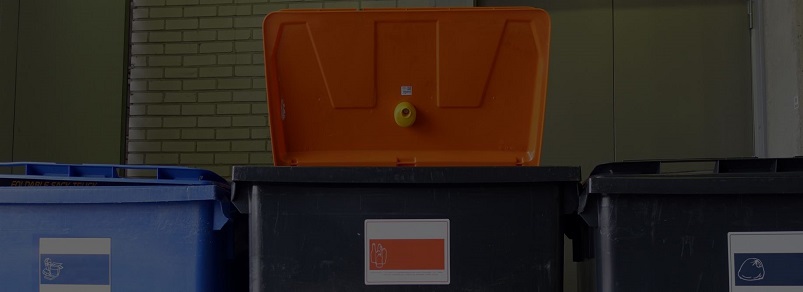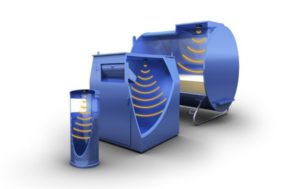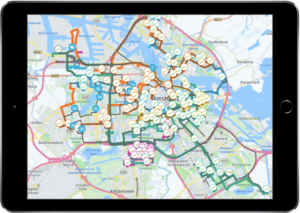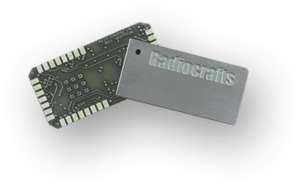The new era of IoT is being enabled by the proliferation of various devices like RF IDs, sensors, and actuators. Smart devices are now embedded in our surrounding environments to monitor and collect ambient information. In a city environment this leads to what is called a Smart City framework where intelligent services can be offered on top of such information to improve human daily life. One example of such an intelligent service is having IoT-enabled waste management.
The world is becoming more and more city-centric as technology and innovation progresses to new found heights. It is estimated that by 2050, around 70% of the earth’s population will be living in city environments, therefore, allowing the creation of exceptionally large cities. Such a city would need a smart and sustainable infrastructure to manage all of the citizen’s needs. When a wireless sensor network is applied to a city, it collects and processes data which is used to transform a normal city into what is called a smart city. One important aspect of a smart city is waste management.
Therefore, in this blog post we will talk about what an efficient waste management model looks like, then, we will talk about SUEZ and their contributions to the industry, and finally, we will describe Radiocrafts’ newest product line, WIZE, which is effective for waste management solutions.
An Effective Waste Management Model
An effective waste management model is one that covers the three following aspects:
· The physical infrastructure
· The IoT Technology
· The Software Analytics
The physical Infrastructure:
The physical infrastructure involves the physical components of a waste management model:
- Waste bins – organic, glass, paper, plastic, metal, toxic
- Pipes
- Trucks – waste collection and routing
- Depots – intermediate waste storage areas within the city
- Dumps
Then we need to consider the following components as well:
- Bin locations
- Recycling of inorganic waste
- Processing of organic waste
IoT Technology:
The IoT technology category focuses on the devices adopted to record and transfer information such as:
- RFID tags – used for bin tagging and identification
- Near Field Communications – adopted for transferring the data in the infrastructure.
- Sensors – fundamental component of IoT-enabled waste management, they measure a set of physical quantities such as: capacity, weight, temperature, humidity, chemical reactions, and pressure
- Wireless sensor networks (for large scale communications) – adopted for transferring the data in the infrastructure. Applied on top of sensors that interact wirelessly with each other and the network components.
- Actuators – Used to interact with the waste bins, for example, locking the bin lid when its full.
- GPS – Incorporated on the collection trucks. Essential for location tracking during dynamic routing.
Software Analytics:
The software analytics category focuses on understanding your waste and making data driven decisions:
- Dynamic scheduling – Defining the exact time where a trucks’ routing process will be initiated.
- Dynamic routing – Real-time changes in the pre-defined route to better serve the needs of ongoing waste management.
It also involves:
- The architecture – Identifying where bins, trucks, depots, dumps, are located and creating an efficient routing system based on this data.
- The social context – describes the dynamics and social impact of waste management on citizens.
- The experimental data – Used for evaluation of the proposed solutions.
For example, by using software analytics you can uncover a plethora of useful data which proves that dynamic routing is more efficient than the current routing procedures we have today. With dynamic routing you can:
- Reduce mileage on fleet vehicles.
- Cut costs on labour and petrol.
- Save Time – Increase efficiency.
- Identify the most cost-effective routes.
- Give a better response to customers
- Less time is spent planning routes, or picking up at sites that don’t need service.
- Review driver performance.
Avoid transportation delays, while tracking truck fleets in real-time.
SUEZ is an example of a company which has used an effective waste management model to cement themselves as global leaders in this industry.
You can read more about effective waste management models here.
SUEZ – Contributions to Waste Management
SUEZ are experts in the waste management industry and this is clearly shown by the amount of work they have done in the industry. SUEZ can support customers in every process of the waste management industry, including:
- Waste management engineering
- Waste sorting and processing
- Waste collection and logistics
- Waste recycling, recovering, and trade
- Real estate and urban cleansing
SUEZ’s approach to waste management includes environmental performance (an increase in recovered volumes), economic performance (cost controls and optimization of resources), and societal initiatives through actions to raise awareness and offer incentives to inhabitants.
You can read more about SUEZ activities in the waste management industry here.
They are increasingly making use of new technologies to meet the needs of its customers in the waste recycling and recovery sector. Radiocrafts has also recognized the need to adapt to more complex and efficient waste management systems.
Radiocrafts new WIZE module – Efficient for Waste Management
A main requirement for an effective waste management model is to have an effective wireless RF device which can reliably send data within the infrastructure. The requirements on the RF connection side are that the device must be low power, support long range, is reliable and secure, and requires low maintenance.
Radiocrafts newest product line, WIZE, is perfect for such an application. The Wize protocol is a long range, low power, and bi-directional radio communication that operates in the 169 MHz frequency. It is a result of the development of a new LPWAN solution based on Wireless M-Bus mode N at 169 MHz. Wize was specifically designed to connect hard-to-reach objects and to ensure deployments on a territory-wide scale for the city’s uses, which require integration in a constrained environment, such as waste management.
Additionally, on a territory-wide scale, deployment of the network is simple and fast because the technology requires little equipment (a communicating object and a concentrator). No repeater system, no pairing or complex programming sensors are required.
The Wize protocol provides:
- Robust communication and wide area coverage using VHF frequency
- Secure transfer of data in terms of privacy, data integrity, and authentication
- A low power battery operated solution with a lifetime of more than 15 years
- A proven solution based on the Wireless M-Bus standard
- Firmware over-the-air updates as an integral part of the protocol
- Power efficient 2-way communication protocol for sensor reading and control
It has very good performance in range, penetration, and special redundancy, which have been confirmed in the framework of large-scale field deployments, making it possible to minimize the number of equipment and therefore high points to accommodate them. Since the device has a battery lifetime of up to 20 years and a minimum amount of equipment needed in the system, this proves to be a low maintenance technology, helping you save money.
You can read more about the WIZE Protocol Network here.
You can read the RC1701HP-WIZE Datasheet here.
To learn more about the WIZE protocol you can read our white paper number 016 here.
What to Take Away From This?
Cities are growing and becoming “smarter”, the world is becoming more city-centric, and people are recognizing the increasing need to adapt to become environmentally efficient, and waste management is a massive part of this shift. As cities evolve, companies need to continuously innovate and adapt our technologies to suit the current and future requirements in waste management. Part of this adaptation and comes in creating new and efficient models for waste management which take the entire infrastructure into account, including the physical infrastructure, the IoT technologies, and the software analytics. We can clearly see from the success of SUEZ in this industry, that such models work and are tirelessly being improved to create an efficient smart city. Radiocrafts has also joined in on this effort to improve waste management systems with our very own new product line, WIZE.






